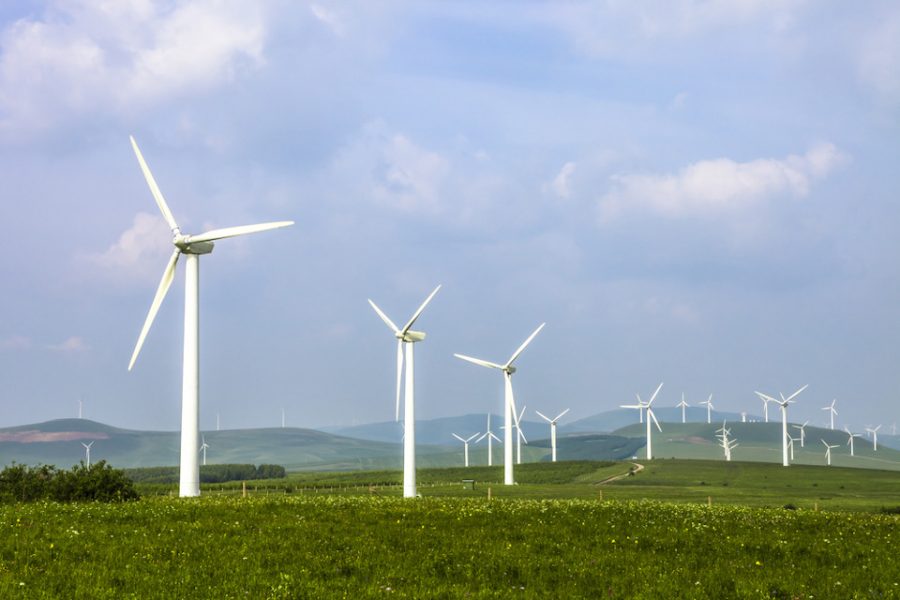
Eight key takeaways from Draft Wind Repowering Policy, 2022

The Ministry of New and Renewable Energy has come up with its latest draft policy to repower old and low-performing wind turbines to maximise their potential. Repowering essentially means upgrading under-performing wind turbines to increase their efficiency and ensure maximum utilisation of wind potential.
An estimate by the National Institute of Wind Energy (NIWE) suggests that of the 41.66 GW installed wind energy capacity in India, more than 25 GW of wind turbines need repowering.
India’s pilot wind energy project was launched in Tamil Nadu in 1986, but the programme started earnestly only in the late 1990s. Tamil Nadu, Gujarat, Maharashtra, Rajasthan, Karnataka, and Andhra Pradesh are the most suitable states for harnessing wind power.
Also read: Climate change buoys TN’s wind power, but state yet to fully tap it
Tamil Nadu has the highest installed wind-power-generating capacity, as well as repowering potential, says Ministry of New and Renewable Energy (MNRE) data. Gujarat comes in second position. These states have the oldest wind turbines in prime locations for harnessing wind energy. For better utilisation of wind resources, these old turbines must be repowered.
As COP27 begins in Egypt, maximum utilisation of wind power is also important for India to complete its targeted Nationally Determined Contributions (NDCs) under the Paris Agreement.
In 2016, the MNRE had issued a similar policy to repower old wind turbines. However, it failed to achieve the target. Now, it has made some revisions to the policy and brought in some additional provisions. Here are eight takeaways from the draft national wind repowering policy 2022.
1. Urgent need for repowering
According to the draft policy note, “Some of the old wind turbines have already completed their design life while some are approaching the end of their design life.” These wind turbines are inefficient compared to the latest technology. They also have lower hub heights (30–60m), whereas latest turbines have hub heights of 120–140 m. Wind turbines with a lower hub height cannot harness the wind available at higher hub heights. Therefore, the older, smaller wind turbines must be upgraded to more efficient turbines with a greater capacity.
Also read: India on path to meet renewable energy target in 2030, but hurdles remain
2. Turbines below 2 MW capacity
The new draft policy states that the wind turbines that need repowering include those below the capacity of 2 megawatt (MW) or those that have completed their design life. The 2016 policy had included only the turbines below the capacity of 1 MW. “Since the latest wind turbine technology of 3+ MW capacity is being manufactured in the country, the repowering of turbines below 2 MW capacity must be considered,” the draft policy says.
3. More ‘power’ to the states
The draft policy has identified turbines below 2 MW capacity in six states, including Tamil Nadu (4100 MW), Maharashtra (1311 MW), Karnataka (954.3 MW), Gujarat (1508 MW), Rajasthan (1231 MW), Madhya Pradesh (290 MW) Kerala (18 MW), and Andhra Pradesh (470 MW). The total is 25406 MW or 25.4 gigawatt (GW).
4. Incentives
Like the 2016 draft policy, the latest policy also suggests a 0.25 per cent interest-rate rebate for repowering projects. However, the new draft policy adds a special scheme, under which the Centre or respective state may give other incentives to wind power developers if they agree to repower their turbines.
Also read: India unlikely to meet 175 GW renewable energy target by year-end
5. No RPO
The draft policy says the respective states may be exempted from the Renewable Purchase Obligation (RPO) when the turbines are being repowered and not producing wind energy. Under the Indian Electricity Act, 2003, the RPO mandates that all electricity distribution licensees should buy or produce a certain minimum quantity of their requirements from renewable energy sources.
6. Free to sell extra power
According to the draft policy, once the turbines have been repowered, project developers will be free to sell additional wind power generated to distribution companies (DISCOMs) or to any other entity (if the DISCOM refuses) through open access.
7. Solution for aggregators
Unlike the old draft policy, the new one has found solutions where multiple players apply together for repowering. In that case, the state or central nodal agency may identify the potential turbines for repowering. The nodal agency will nominate a PSE or private developer as the Wind Repowering Project Aggregator.
Watch: India pushes for renewable energy to deal with power crisis
8. Advisory panel
The MNRE has stated that it will form of a monitoring and advisory committee within a month of the policy being announced. This panel will be called the Wind Repowering Committee and comprise members from the central and state governments, the Indian Renewable Development Agency, Central Transmission Utility, NIWE, state renewable agencies, and independent members.


